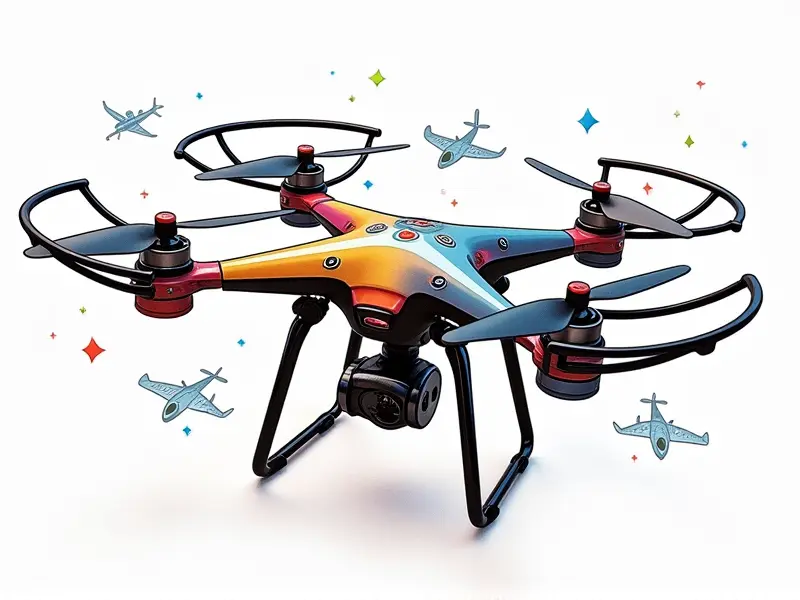How does a RC heli work?

Inside the Mechanics of RC Helicopters
Remote control (RC) helicopters are marvels of engineering, combining aerodynamics and mechanics to create a complex yet fascinating flying machine. This article delves into the intricate workings of these miniature aircraft, explaining how they hover, maneuver, and achieve flight.
How Do Remote Control Helicopters Work?
The primary function of an RC helicopter is to provide aerial entertainment through precise control and maneuverability. To understand its mechanics, it's crucial to break down the components that make up this sophisticated system.
Understanding RC Helicopter Dynamics
RC helicopters operate on principles similar to full-scale helicopters but are scaled down to fit within a manageable size while retaining the same essential features. The dynamics of flight involve several key elements:
- Lift Generation: Lift is created by the main rotor blades, which rotate at high speeds, generating downward airflow.
- Thrust and Direction Control: By adjusting blade pitch angles, pilots can control both vertical lift and horizontal movement.
- Aerodynamic Forces: Understanding aerodynamics is crucial for mastering the flight dynamics of an RC helicopter.
Mastering RC Helicopter Mechanics
To truly master the operation of an RC helicopter, one must understand its mechanical components and how they interact. Key parts include:
- Main Rotor Blades: These are the primary source of lift.
- Tail Rotor Assembly: This counteracts torque from the main rotor to maintain stability.
- Gyroscopes and Control Systems: Gyroscopes help stabilize flight, while control systems transmit pilot commands to various parts of the helicopter.
Unveiling the Secrets of RC Heli Flight
The secrets behind successful RC heli flights lie in a combination of mechanical proficiency and aerodynamic understanding. Pilots must learn how to:
- Adjust Blade Pitch: Changing the angle of attack on the rotor blades affects lift.
- Navigate Wind Conditions: Adapting flight patterns based on wind speed and direction is crucial for stability.
- Maintain Proper Balance: Ensuring equal weight distribution helps in achieving smooth, controlled flights.
Breaking Down RC Helicopter Functionality
The functionality of an RC helicopter can be broken down into several subsystems working together:
- Main Rotor System: Consists of the rotor blades and hub, responsible for lift.
- Tail Rotor System: Counteracts torque to prevent unwanted yaw movement.
- Control Surface Actuators: Mechanisms that adjust blade pitch based on pilot input.
The Science Behind RC Helicopter Lift
Lift is the upward force generated by an aircraft's wings or, in this case, rotor blades. The physics of lift involves:
- Airfoil Design: Rotor blade shape and curvature influence how air flows over them.
- Angle of Attack: Adjusting the angle at which the blades meet the airflow changes lift production.
- Circulation Theory: Understanding circulation helps explain how vortices contribute to lift generation.
RC Helicopter Tail Rotor Functionality
The tail rotor is a critical component that counteracts the main rotor's torque. Its functionality includes:
- Torque Compensation: The tail rotor prevents unwanted yaw by generating thrust opposite to the main rotor.
- Pitch Control: Adjusting pitch angles allows for precise control over directional movement.
Essential Guide to RC Helicopter Motors
The motor in an RC helicopter is responsible for driving the main and tail rotors. Key aspects include:
- Motor Types: Brushed vs brushless motors, each with their own advantages.
- PWM Control: Pulse Width Modulation regulates motor speed and power delivery.
- Voltage Requirements: Proper voltage levels are crucial for optimal performance.
Understanding RC Helicopter Control Systems
The control system translates pilot inputs into mechanical movements. Key components include:
- Potentiometers and Servos: Sensors detect stick positions, while servos adjust rotor pitch angles.
- Battery Packs: Reliable power supply ensures smooth operation.
Mastery of RC Helicopter Gyroscopes
Gyroscopes play a pivotal role in stabilizing flight. Key features include:
- Sensing Orientation: Gyros detect changes in the helicopter's pitch, roll, and yaw.
- Feedback Loop: The gyro works with the control system to maintain stability.
Conclusion
Mastery of RC helicopters requires a deep understanding of their intricate mechanics and aerodynamics. By delving into the workings of lift generation, rotor systems, motor functions, and control mechanisms, enthusiasts can enhance their piloting skills and achieve more precise and stable flights. Whether you're a beginner or an experienced pilot, unraveling these secrets will elevate your RC helicopter experience to new heights.

